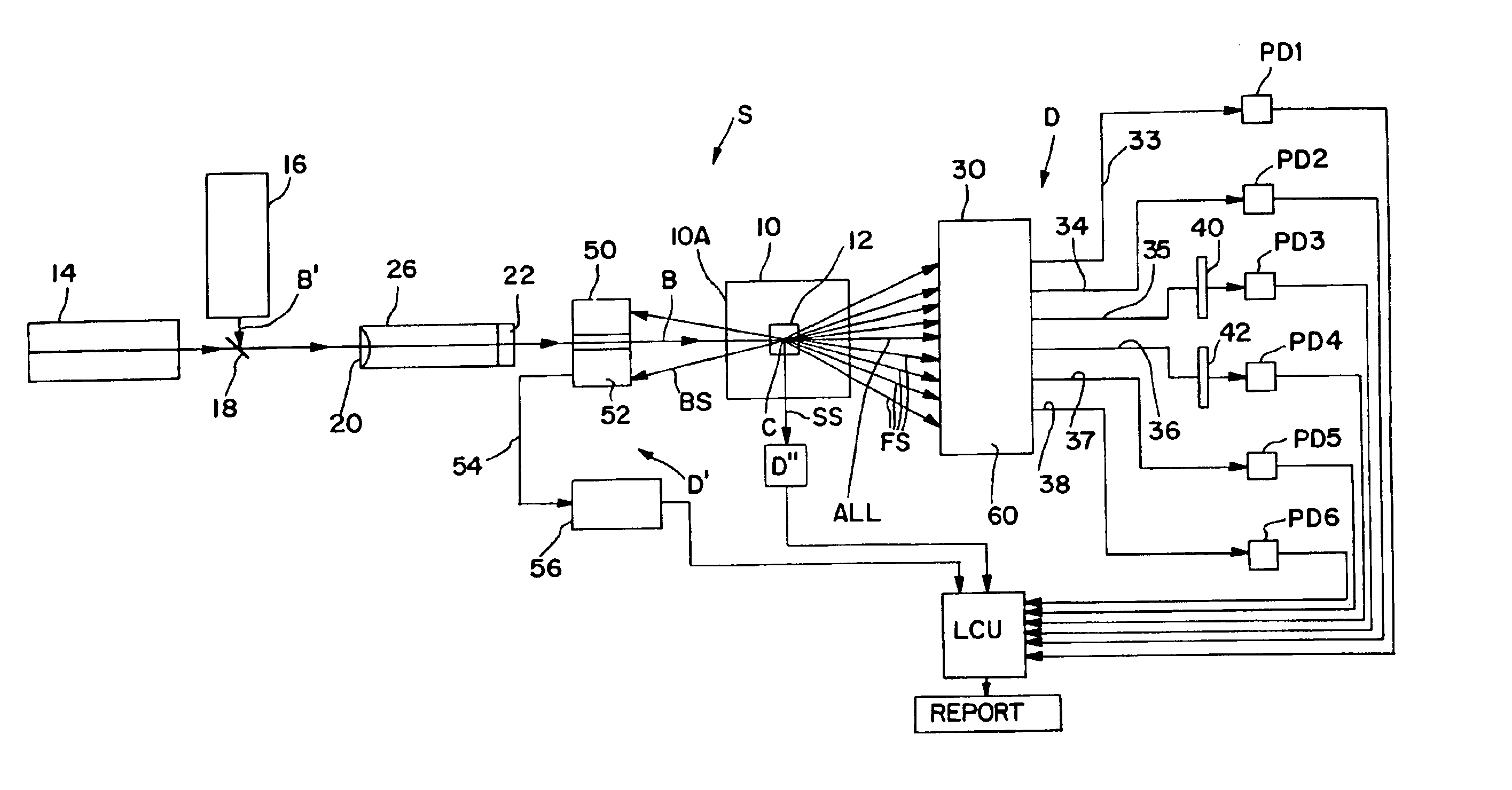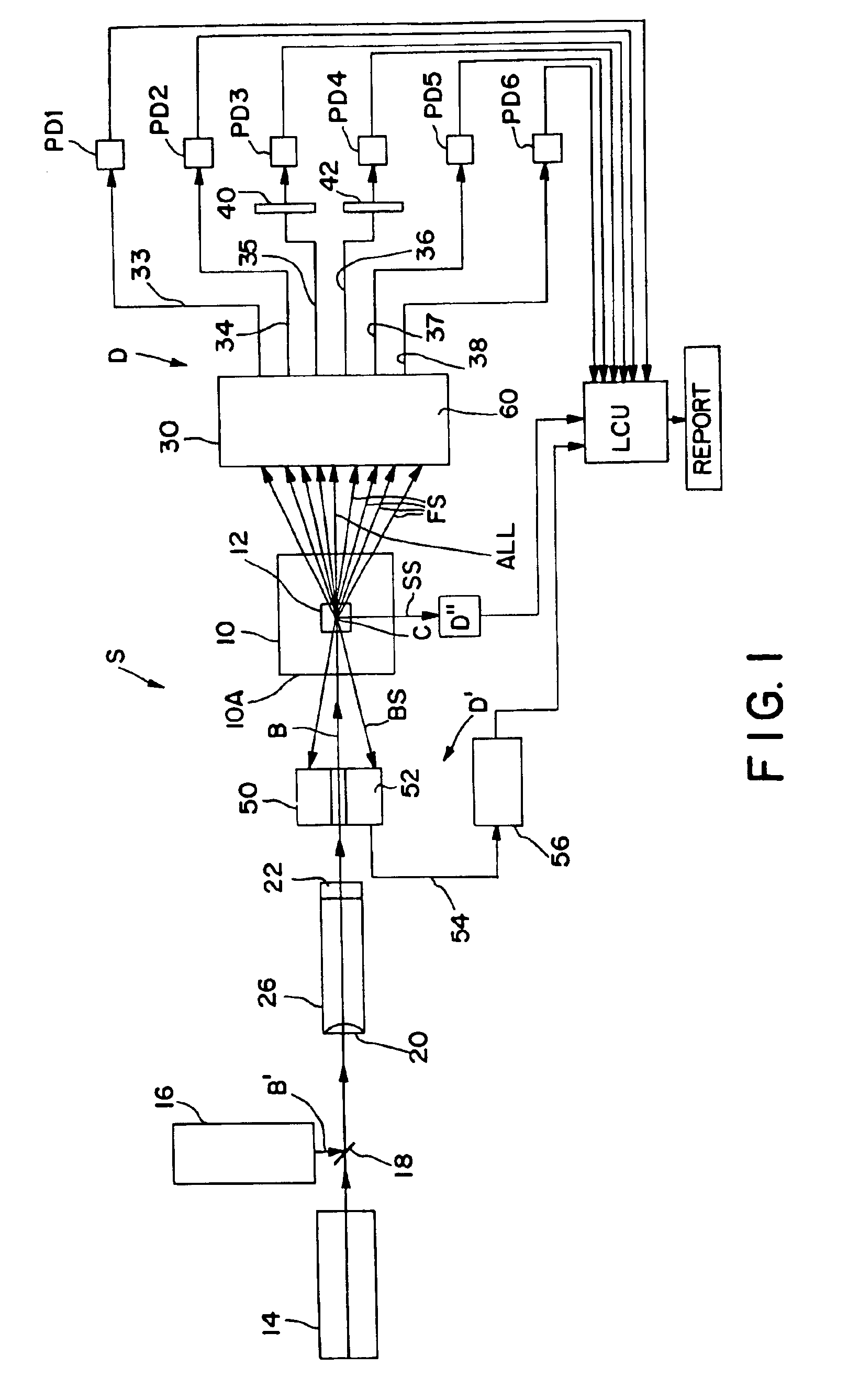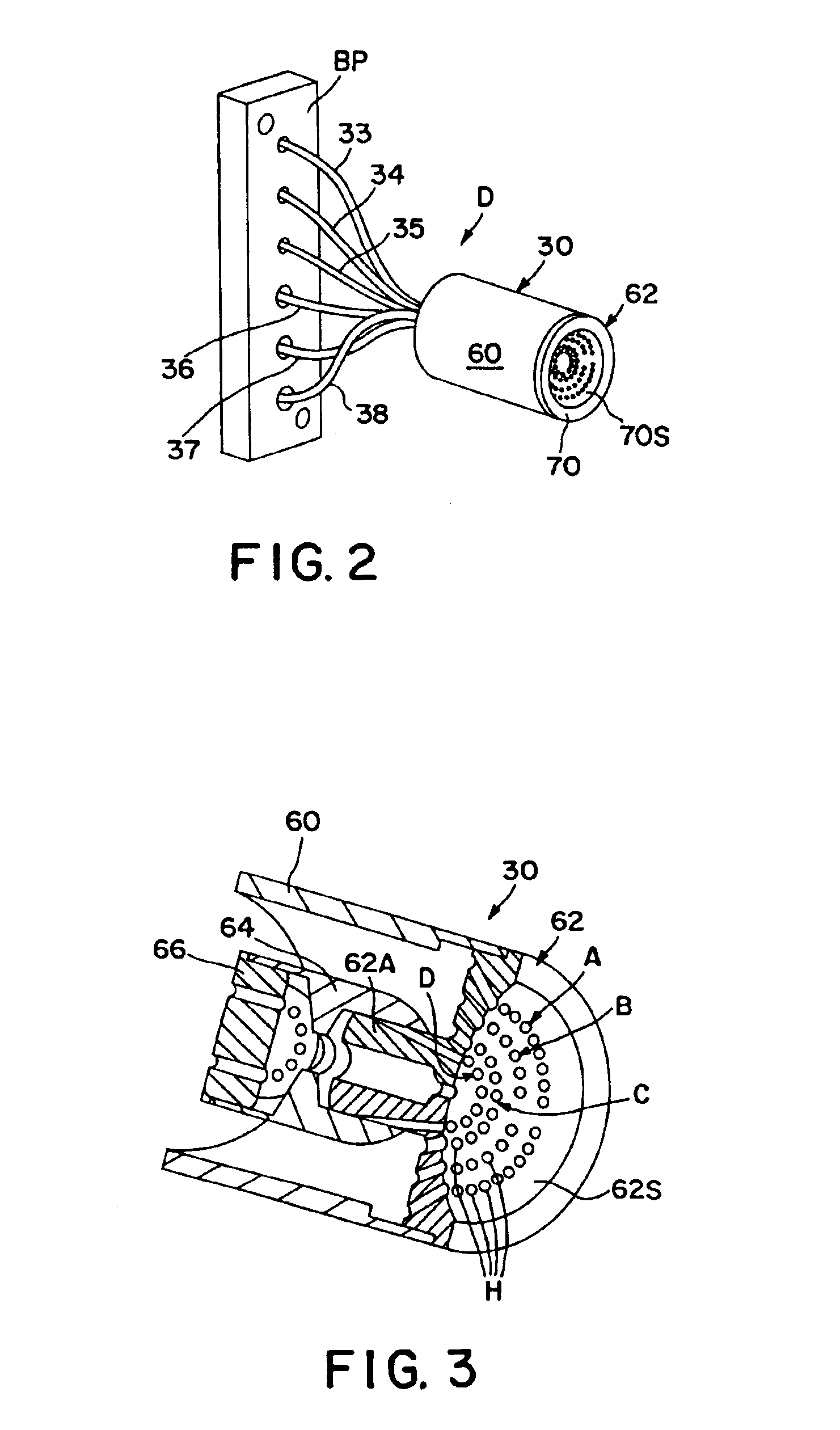Apparatus for differentiating blood cells using back-scatter
a back-scattering and blood cell technology, applied in chemical methods analysis, instruments, phase/state change investigation, etc., can solve the problems of platelet agitation, time-consuming and costly tagging step, and somewhat inaccurate cell count of cell type of interes
- Summary
- Abstract
- Description
- Claims
- Application Information
AI Technical Summary
Benefits of technology
Problems solved by technology
Method used
Image
Examples
Embodiment Construction
Referring now to the drawings, FIG. 1 schematically illustrates an electrooptical system S adapted to carry out the blood cell-differentiating method of the invention. System S is designed to be retro-fitted into a standard XL™ Flow Cytometer made and sold by Beckman Coulter, Inc. System S comprises a forward scatter / axial light-loss detector D, a back-scatter detector D′ and a side-scatter detector D″. The respective electrical output signals produced by these detectors are fed to and processed by a suitably programmed microprocessor of a Logic and Control Unit (LCU) comprising the flow cytometer instrument. Based on the instrument's programming, various particle parameters detected by detectors D, D′ and D″ are reported and displayed, e.g., as histograms and scattergrams, as presented below.
Central to system S is an optical flow cell 10 having a centrally located particle-interrogation zone 12 through which a stream of individual particles in suspension can be made to pass, one at...
PUM
 Login to View More
Login to View More Abstract
Description
Claims
Application Information
 Login to View More
Login to View More - R&D
- Intellectual Property
- Life Sciences
- Materials
- Tech Scout
- Unparalleled Data Quality
- Higher Quality Content
- 60% Fewer Hallucinations
Browse by: Latest US Patents, China's latest patents, Technical Efficacy Thesaurus, Application Domain, Technology Topic, Popular Technical Reports.
© 2025 PatSnap. All rights reserved.Legal|Privacy policy|Modern Slavery Act Transparency Statement|Sitemap|About US| Contact US: help@patsnap.com



